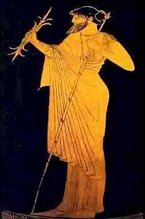
Greetings my friends. My question. Is the coin on the right beautiful? Perhaps I should rephrase and ask if the coin is aesthetically pleasing. Collectively, do we have the right to make this judgment? Do I have the right to make this judgment for others? Let us take it one step further. Does a critic have the right to make this decision?
The most extreme objective attitude assumes unchanging standards by which all art is measured. Is the coin, indeed, art? Many will say that all art should be measured against a particular period or particular peoples such as the Greeks and Romans. Such an attitude rejects the art of many cultures and denies almost all variability in concepts of aesthetic values. If one is more flexible, one’s attitude may include other factors such as unity, variety and intensity in varying degrees and proportions according to the nature of the art object. The sensitivity and understanding of the observer will change, but the real value will reside within the art object.
Changes in the history of taste therefore do not prove changes in value but only in preference. Consequently, a viewer may prefer one work to another but must admit the second has a higher aesthetic value. Let’s take a leap to a more subjective judgment. Here the critical evaluation becomes purely personal and each individual applies different criteria to make aesthetic judgments. The aesthetic value of an art object rests not in the object but in the response of the observer, who may grant or deny such value of any object. I propose the viewer must bring to the table an aesthete equal to the artist’s input or else there is no visual communication between artist and viewer.
I would like to see this paper provoke a bit of discussion amongst our more learned colleagues and I will enjoy sitting back and reading the banter! Thank you for reading and please let me know if you enjoy or if you have an opinion.. God Bless.. Jerry..
The most extreme objective attitude assumes unchanging standards by which all art is measured. Is the coin, indeed, art? Many will say that all art should be measured against a particular period or particular peoples such as the Greeks and Romans. Such an attitude rejects the art of many cultures and denies almost all variability in concepts of aesthetic values. If one is more flexible, one’s attitude may include other factors such as unity, variety and intensity in varying degrees and proportions according to the nature of the art object. The sensitivity and understanding of the observer will change, but the real value will reside within the art object.
Changes in the history of taste therefore do not prove changes in value but only in preference. Consequently, a viewer may prefer one work to another but must admit the second has a higher aesthetic value. Let’s take a leap to a more subjective judgment. Here the critical evaluation becomes purely personal and each individual applies different criteria to make aesthetic judgments. The aesthetic value of an art object rests not in the object but in the response of the observer, who may grant or deny such value of any object. I propose the viewer must bring to the table an aesthete equal to the artist’s input or else there is no visual communication between artist and viewer.
I would like to see this paper provoke a bit of discussion amongst our more learned colleagues and I will enjoy sitting back and reading the banter! Thank you for reading and please let me know if you enjoy or if you have an opinion.. God Bless.. Jerry..

No comments:
Post a Comment